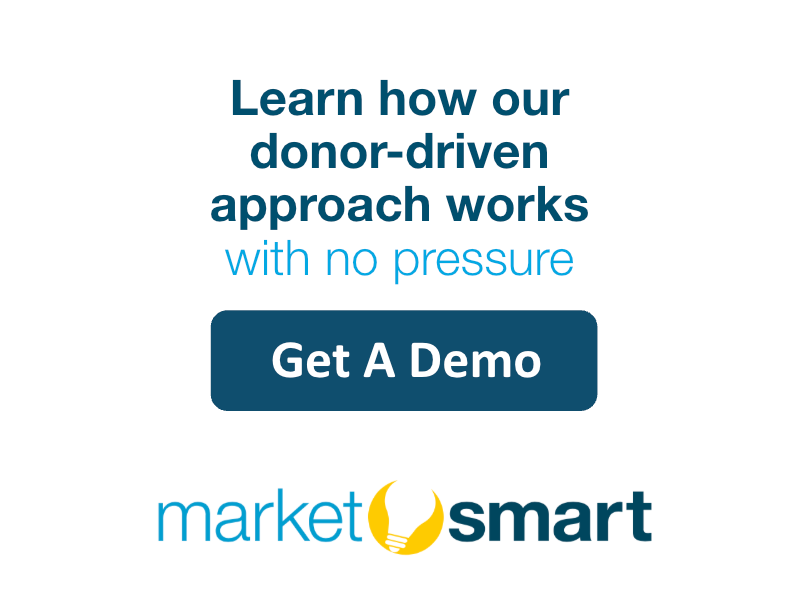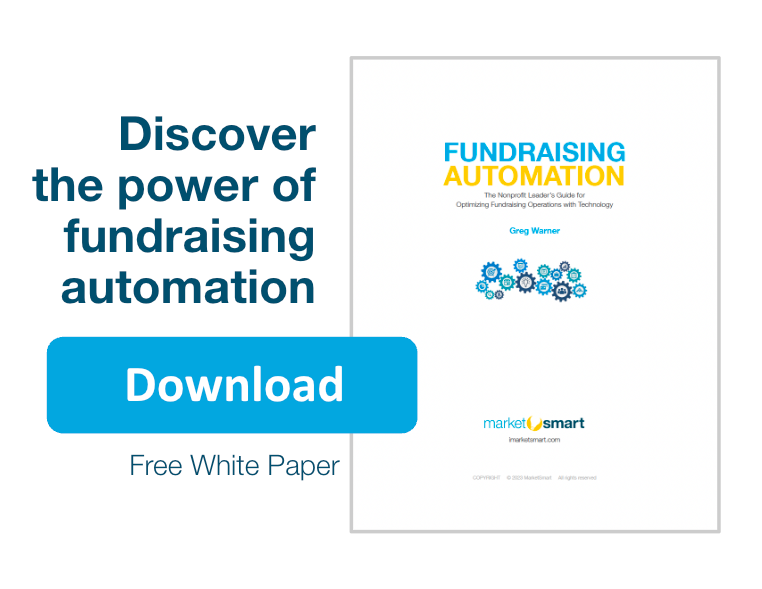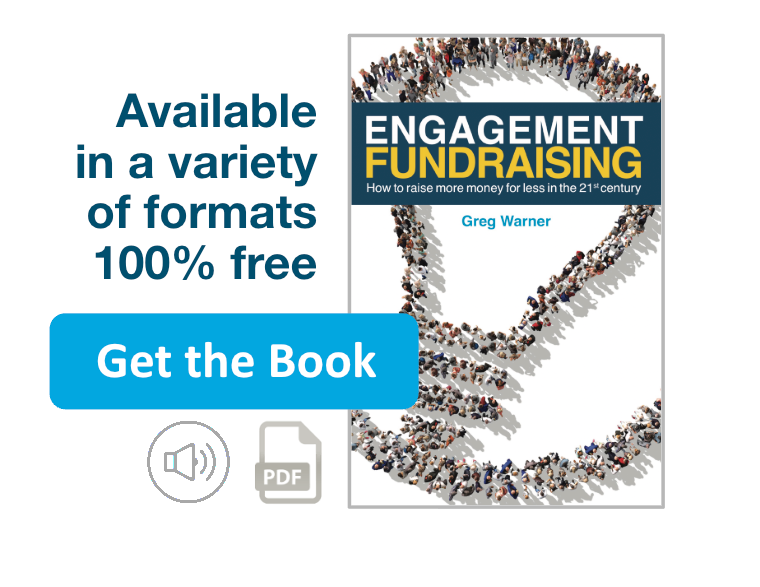Your biggest major donors simply cannot be treated like all your other donors. If you’re like most mid-size and larger nonprofits, they are funding the great majority of your operation. What are you doing to recognize them? What kind of giving experience are you providing? Gift officers need to be able to offer major donor stewardship and recognition opportunities so your biggest donors get treated like the unique partners and supporters they are.
It’s not about privilege. It’s about alignment with what a major gift represents.
A Caveat about Major Donor Stewardship Experiences
One of the challenges with this topic is that the definition of ‘major donor’ differs depending on the organization. At one level, $100,000 would be the biggest gift ever received by a nonprofit. Such an organization would consider most five-figure gifts to be major gifts.
But other organizations deal in the realm of six and seven-figure gifts. For them, $25,000 is a mid-level gift.
So, while we’re talking about million-dollar donors and experiences, take what you’re about to read and apply it however it fits to your context.
7 Ways to Deliver Million-Dollar Giving Experiences
There are different types of giving experiences you can offer for different situations. Major donor stewardship tends to happen after a gift is given. But a recognition plan might be developed during the actual giving process. And there are other experiences you can offer that deepen the bond between your organization and the donor.
Here are seven of the best ways to make your major donors feel appreciated, valued, and respected, and to make them feel terrific about their gift.
And keep in mind that some of these will be more appropriate for some donors than others – depending on what matters most to them. Value is in the eye of the beholder. Not everyone cares about having their name on a building. So don’t offer that to a donor if you know it won’t matter to them.
1. Offer Restricted Giving Options
Better thought of as giving instructions, restricted gifts provide the donor with more input into where their gift will go and how it will be used. For donors who want to make a particular impact, or who want to know their money is being used in particular ways, offering this option can make them feel more like a valued partner than an ATM.
They didn’t realize how much their money could accomplish before being offered these options.
There are probably an infinite variety of possible restricted gift arrangements. The main challenge is usually overcoming institutional opposition to them.
Some nonprofit leaders dislike restricted gifts because it prevents them from using the money how they want. And that’s an understandable position. It’s no fun to watch one program faltering due to lack of funds while this huge gift sits there, but can’t be touched because it was allocated elsewhere.
But the reality is, offering restricted giving increases donations – both in quantity and in size.
Even more compelling, research found that 98% of people who are offered restricted giving options don’t take them, but the average sizes of their gifts still increases.
Give major donors options for how to give. They will appreciate it. They will probably give more. And that gift will likely still be unrestricted. But their giving experience will be far greater.
2. Encourage Multiple Gifts
At its core, giving feels good. Donors have many different reasons for giving, but all of them result in a positive feeling.
So, if you can help a donor give a large gift more than once, they will experience the joy of giving each time. This is one reason to allow donors to give in more than one installment rather than all at once.
For example, suppose a donor wants to give $500,000 to your charity. You could offer them the opportunity instead to give $200,000 three years in a row. Now, their initial gift will be lower, so it “feels” like you saved them money. Later, they get to feel all the good feelings associated with giving the next two years. And you got an extra $100,000 out of it as well.
For donors who give a one-time major gift, you could also return to them later and ask them to give again to a specific campaign, with a matching gift, or some other opportunity. The point is, keep the channel open with a donor stewardship plan.
Don’t demand or expect second gifts, but don’t neglect the donor either, because most will give again if they have a good first-time giving experience.
3. Increase their Matching Gift
Speaking of matching gifts, this is a great way to thrill a major donor when they see the impact their gift will have, by multiplying it with the help of other donors. This is so exciting for them because they aren’t just helping raise more money, but they’re playing an active role in getting other people involved.
Matching gifts are a community effort. The person who matches the gift gets the rush of spearheading it, knowing they have directly influenced many other donors to support an organization they care about deeply.
You can make this even more exciting by increasing the multiple. Instead of a doubling gift, suggest they do a 3x, 4x, or even 5x match.
4. Offer Permanence
Permanence is a powerful motivator. And it can take many forms. Yes, you can offer things like naming buildings and scholarships after the donor. And if that sort of recognition plan appeals to that particular donor, you absolutely should do that.
But permanence can take other forms too.
For example, as a form of restricted giving, a donor might give a large amount of money to a trust, and then have it pay out a percentage to the charity every year. This is permanence, because the fund itself never runs out, assuming sufficient growth continues.
Suppose a donor gives $100,000 into such a fund and specifies that it will pay out $10,000 each year. As long as the fund can earn back that amount in growth each year, that fund will continue supporting the nonprofit year after year, long after the donor has died.
5. Let the Major Donor Lead Off a New Campaign
With a big new fundraising campaign, it always helps to burst out of the gate with a big gift to get everyone excited and make them feel like this will be a success.
This is similar to the matching gift idea in that the donor understands that their gift is about more than just them. They are kicking off a new campaign, and their gift will motivate and inspire many other donors to give as well.
If the donor wishes it, you could even let them create a video or write an article about why they wanted to take the lead with this campaign, and why it matters to them. Again – this is about creating the best possible experience for major donors, because that leads to more donations, from the same donor and from other supporters too.
Let Them Speak at an Event
A similar strategy to leading a new campaign is leading off a live event. Fundraising events are unique opportunities for donors of various capacities to engage with your organization. If you have a major donor who has given a prior gift or who is offering a matching gift at the event, consider letting them speak to the audience.
Their joy at getting to motivate and inspire others to give will stay with them long after the event.
6. Offer a Giving Menu
Giving menus empower the donor to find an option that works best for them. This greatly enhances the giving experience because it respects their preferences, their financial situation, and other things that matter to them.
Creating a giving menu is about much more than just offering a few different gift amounts. As already mentioned, you can vary the timeline of the gift. You can also vary the source of the gift.
You could offer a combination of restricted and unrestricted gifts. Maybe they really want to support a particular program, but they also understand the needs of the larger organization. So you could include an option where one fraction of their gift goes to the program they care about most, and the rest to the general fund.
This approach is far more enjoyable, exciting, considerate, and empowering than just asking the donor to name an amount, or suggesting an amount and seeing how they react. That feels more like a negotiation. And negotiations rarely feel good, because it is an oppositional dynamic.
7. Remind Major Donors of Past Giving
For major donor stewardship strategies, this is one of the most impactful ones. In common language, this is like letting them relive their ‘glory days.’
Remember, five years ago, when you gave $50,000 to this program?
You can then show them all the great outcomes that resulted from their prior gift. The lives changed. The opportunities created. The expanded impact for the organization. Specific people who were directly affected by the gift. This is nostalgia, which is another powerful emotional force.
You could have a whole meeting with a donor and do nothing but talk about their previous gift, never even asking them for a new one. They will walk away feeling like a million bucks. And they may just give another million next time you meet.
What about Experiences Before the Donor’s First Gift?
There’s another set of experiences you can deliver to major donor prospects before they’ve given their first gift. Things like:
- Interview them on a podcast or for a blog
- Stream a live event
- Meet beneficiaries of your work
- Volunteering
- Tours
MarketSmart uses at least 35 offers like these to attract high-capacity major donors to your organization. Taking these offers identifies them to you as a potential prospect. It works because, just like the ideas in this article, you are giving them a great experience on the front end, not just pitching them with all your needs and why they should help.
The best thing is, our software automates many of the communications related to these experiences so your gift officers don’t have to do a thing.
Utilizing our automated lead generation process frees up your gift officers to spend more time meeting only with warm prospects, and conducting stewardship activities with existing major donors.
Learn more about how you can automate major donor lead generation
Related Resources:
- How to Help Your Wealthiest Supporters Solicit Themselves
- What Unrestricted Funds and Phone Booths Have In Common
- 5 Strategies for Turning Smaller Major Gifts into Larger Ones
- Why what you do is called ADVANCEMENT




